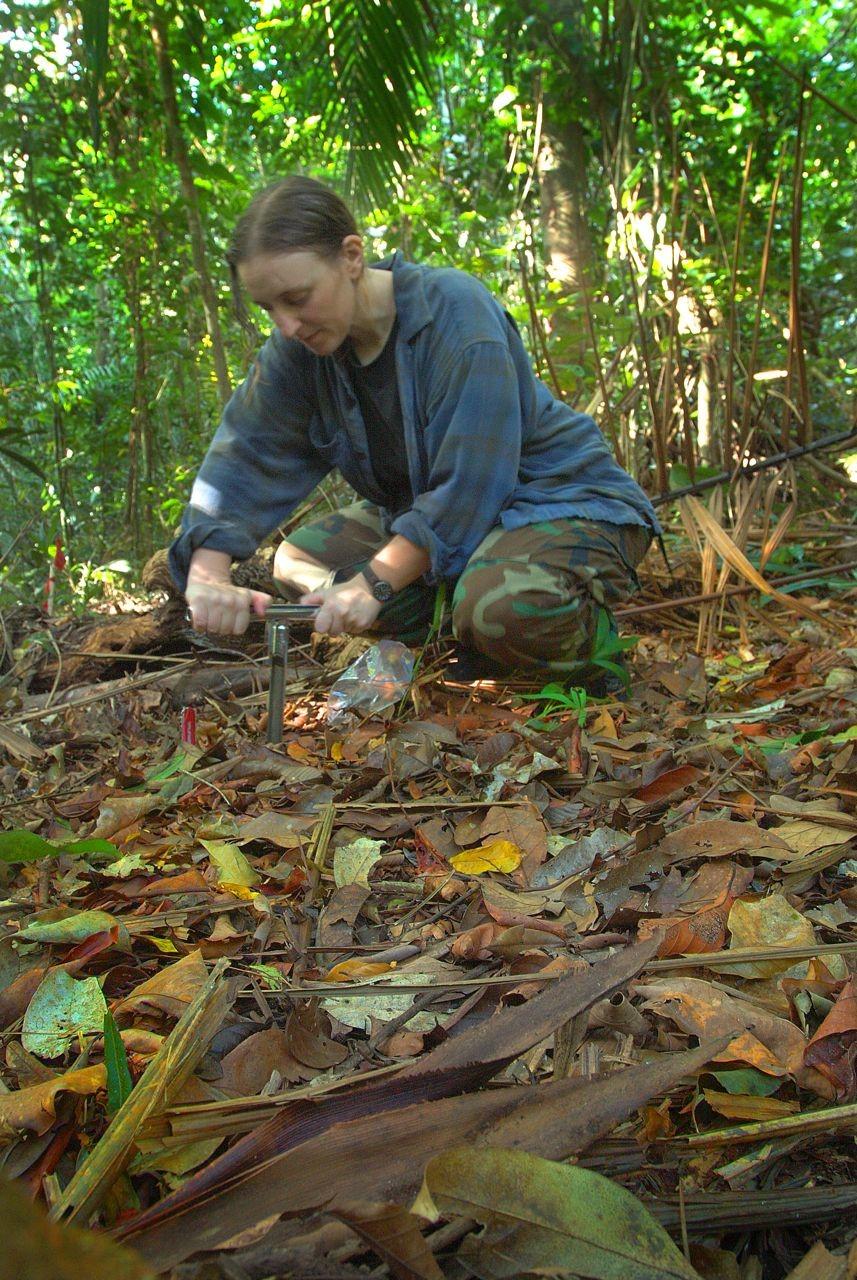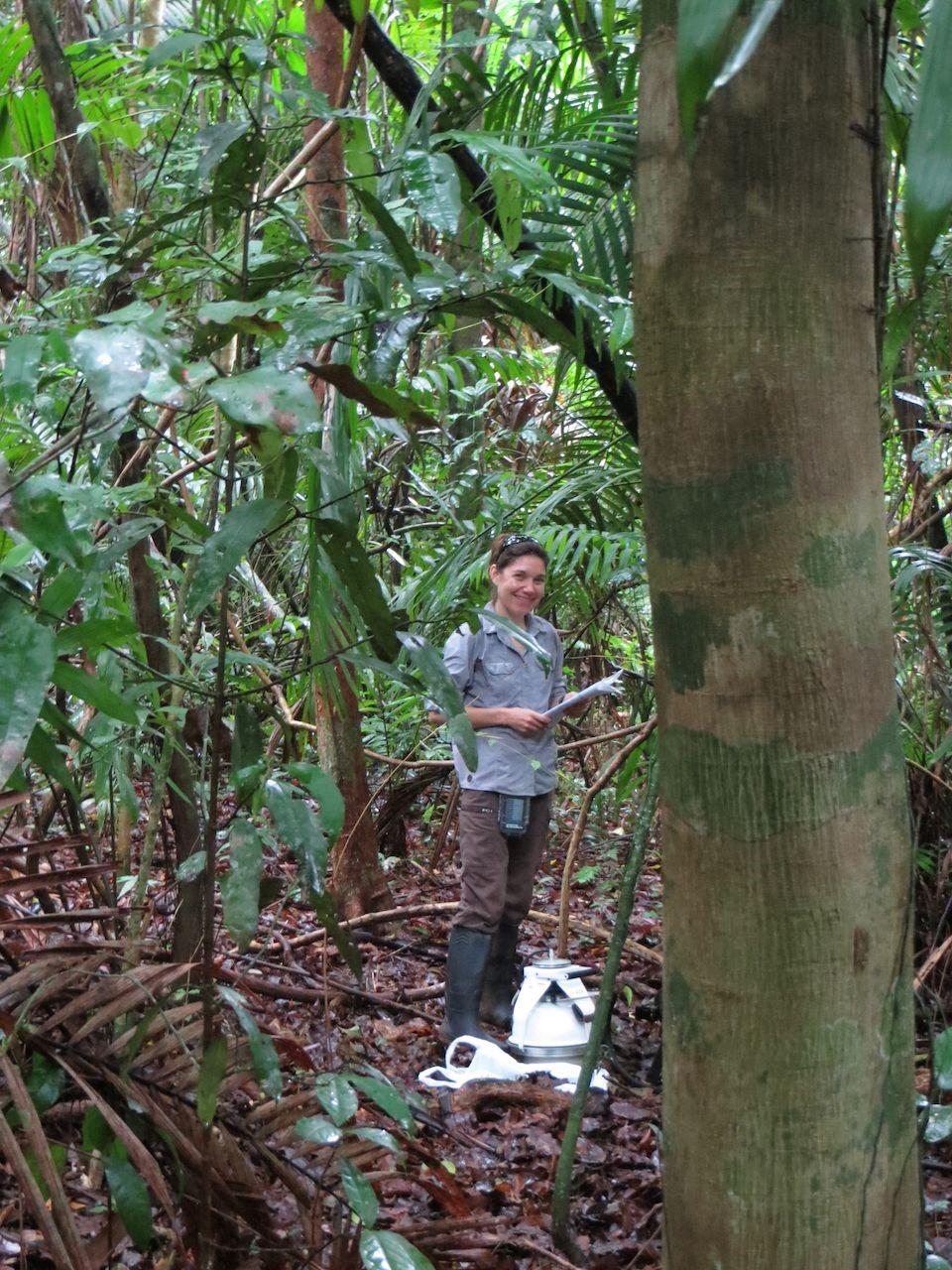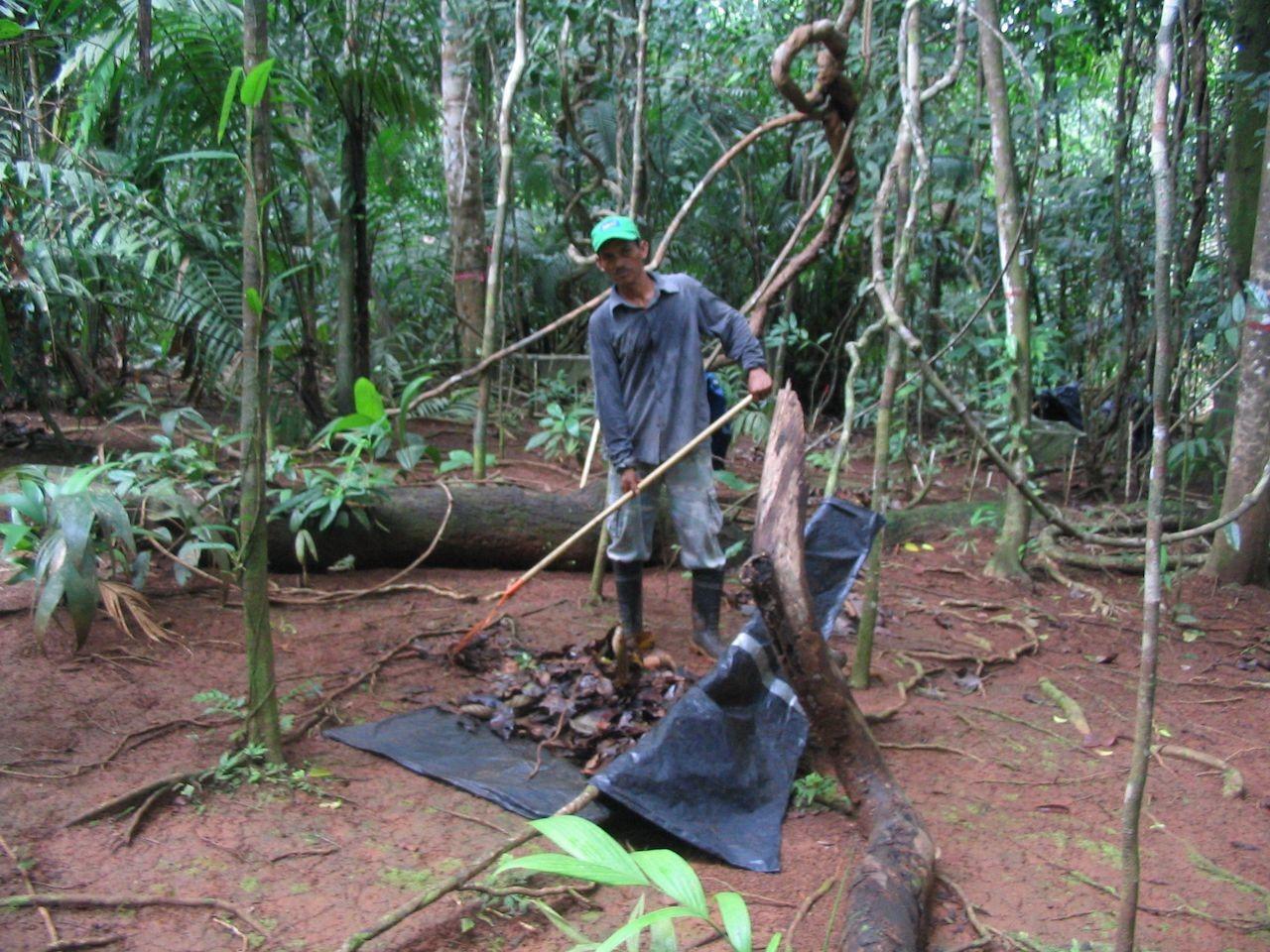Understanding soil carbon storage in tropical forests

A view from the canopy; looking across the forest to the landscape beyond at the research site in the Barro Colorado Nature Monument in Panama
The Microbiology Society is undertaking a project entitled A Sustainable Future as part of our 75th Anniversary, which aims to highlight the Sustainable Development Goals (SDGs) to our members and empower them to use their research to evidence and impact the goals. Earlier this year, we put a call out to our members to submit case studies in the following three areas: antimicrobial resistance, soil health and the circular economy.
This case study is written by Dr Emma Sayer who is Reader in Ecosystem Ecology at Lancaster University. It focuses on Soil Health; maintaining the health of our soils has gained increasing prominence in recent years. Soils are essential for the global food system and regulate water, carbon and nitrogen cycles but are put under pressure from population growth and climate change.
What are the challenges that this research addresses?
Tropical forests are globally important stores of carbon, taking up vast amounts of atmospheric carbon dioxide (CO2) and incorporating carbon into plant biomass and soils. Estimates of tropical forest carbon sequestration, based on measurements of tree growth, show that rising elevated atmospheric CO2 levels appear to have boosted forest productivity, which in turn has helped offset anthropogenic CO2 emissions1,2. However, although forest soils worldwide contain more carbon than the atmosphere, we still know very little about how carbon is stored in the soil, particularly in the tropics, and it is not clear whether increased plant growth will also result in greater incorporation of carbon belowground3.

There are at least three major challenges for research into soil carbon sequestration in tropical forests: First, plant carbon is progressively incorporated into the soil and its stabilisation involves complex interactions between plants, microbial activity, soil chemistry and soil structure4. Second, our knowledge of the microbial processes involved lags far behind our understanding of temperate systems. Finally, it can take many years, or even decades, for us to detect measurable change in soil carbon stocks, which makes it very hard to predict the long-term consequences of global change5.
We started to tackle these challenges with the project ForestPrime, funded by a European Research Council (ERC) Starting Grant. As part of the project, we investigated microbial decomposition of plant litter and soil organic matter in a unique experiment in a tropical forest in Panama, in which litter has been added or removed monthly from large experimental plots since 20036. This long-term experiment allows us to measure changes in soil processes and evaluate soil carbon stocks in response to more than a decade of litter removal or double litter inputs.

What findings and solutions were provided by this research?
As expected, long-term removal of plant litter reduced soil carbon storage, but we were surprised to find that 15 years of double litter inputs has not substantially increased soil carbon stocks in our study forest7. Our previous work demonstrated that greater inputs of plant material (e.g. leaf litter and dead roots) can stimulate the activity of micro-organisms in the soil, which releases stored soil carbon as CO2 to the atmosphere3. When we investigated the impact of the litter addition treatments on soil carbon storage, we found that extra ‘fresh’ carbon was being incorporated into the soil, but at the same time, older stored carbon was being released. The additional litter inputs not only provide energy and nutrients to boost microbial activity, which allows some soil micro-organisms to degrade older sources of carbon, but it is also possible that some of the chemical compounds in leaf litter react with soil minerals, which allows older carbon to be displaced by new plant inputs7. These findings are important, because they demonstrate that increased forest productivity will not necessarily enhance soil carbon sequestration. Instead, we need to better understand how plant litter, microbial activity and soil chemistry interact to stabilise organic matter in the soil.

Francisco Valdez (the hero of the project) raking litter in the experimental plots in a lowland tropical forest in Panama.
How can this research support the transition to a more sustainable future?
Although we demonstrated a disconnect between plant inputs and soil carbon storage in tropical forests, other researchers have reached similar conclusions in temperate woodlands8 and agricultural systems9. Indeed, our analysis of published studies indicates that around 20 years of doubled litter inputs are required to detect a minor increase in soil carbon stocks, and litter addition treatments are more successful in enhancing soil carbon storage in some systems than others10. It is clear that soils represent an important store of carbon worldwide and enhancing soil carbon sequestration could indeed help mitigate the impacts of climate change11. However, we first need to understand the many different processes involved in soil carbon storage, and how these processes interact under different climate change scenarios.
What is the future for research and innovation in this area?
To better understand how carbon is incorporated and stabilised in soils, we should build collaborations between research areas that have traditionally studied individual processes in isolation. By integrating studies of microbiology, soil chemistry, soil physics and plant ecology, we can make rapid progress in our understanding of soil carbon storage. New innovations in molecular techniques, robotics and X-Ray Computed Tomography will also help us address another major challenge of conducting soils research: the difficulty of studying belowground processes without disturbing them!
References and further reading
- Lewis, S.L. et al. (2009) Increasing carbon storage in intact African tropical forests. Nature 457:1003-1006.
- Malhi, Y. (2010) The carbon balance of tropical forest regions, 1990-2005. Curr. Opin. Environ. Sust. 2:237-244.
- Sayer, E.J. et al. (2011) Soil carbon release enhanced by increased tropical forest litterfall. Nat. Clim. Change 1:304-307.
- Schmidt, M.W.I. et al. (2011) Soil organic matter persistence as an ecosystem property. Nature 477:49-56.
- Pendall, E. et al. (2004) Below-ground process responses to elevated CO2 and temperature: A discussion of observations, measurement methods, and models. New Phytol. 162:311-322.
- Sayer et al. (2020) Revisiting nutrient cycling by litterfall – insights from 15 years of litter manipulation in old-growth lowland tropical forest. Adv. Ecol. Res., 62:173-223.
- Sayer et al. (2019) Tropical forest soil carbon stocks do not increase despite 15 years of doubled litter inputs. Sci. Rep. 9:18030.
- Lajtha, K. et al. (2018) The detrital input and removal treatment (DIRT) network: Insights into soil carbon stabilization. Sci. Total Environ. 640, 1112–1120.
- Chenu, C. et al. (2019) Increasing organic stocks in agricultural soils: Knowledge gaps and potential innovations. Soil Till. Res. 188, 41–52.
- Xu S. et al. (under review) Soil carbon stocks respond consistently to litter removal but not litter addition treatments across ecosystems.
- Stockman U. et al. (2013) The knowns, known unknowns and unknowns of sequestration of soil organic carbon. Agr. Ecosyst. Environ. 164:80-99.
About the Author
Dr Emma Sayer who is Reader in Ecosystem Ecology at Lancaster University. More information about her work is available here. Emma is also highly active in public engagement with research, most notably at a science stall at Glastonbury Festival.


